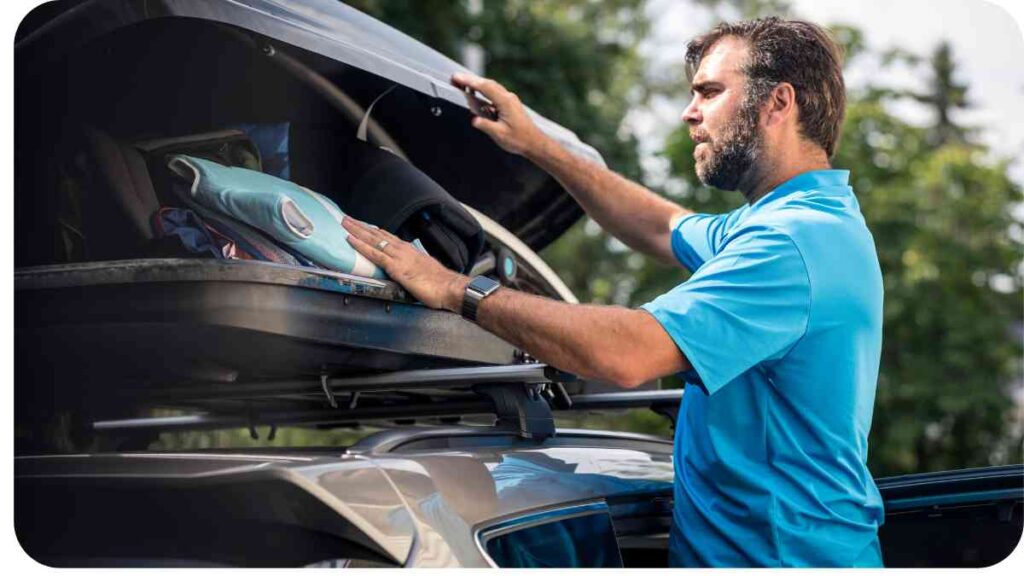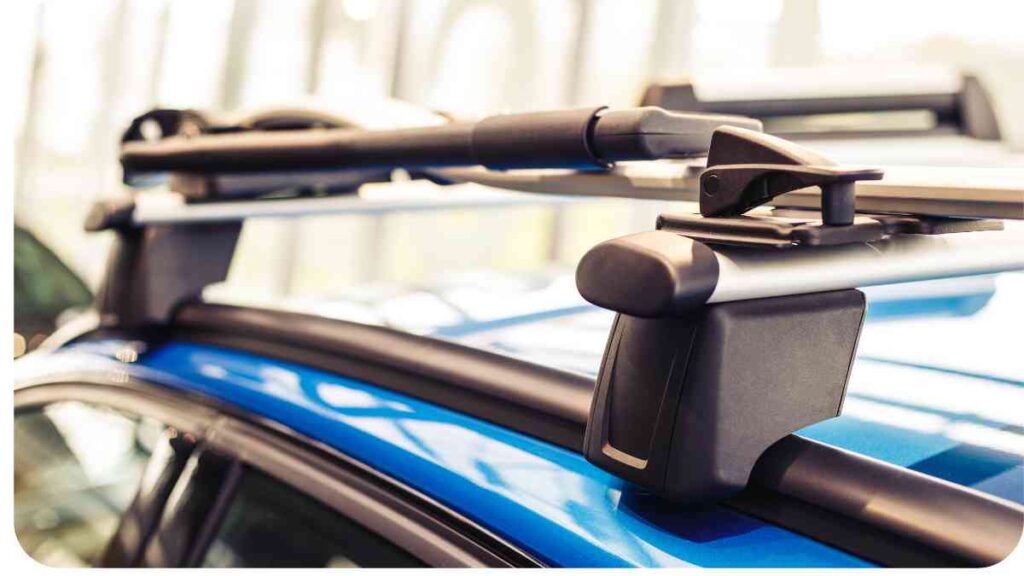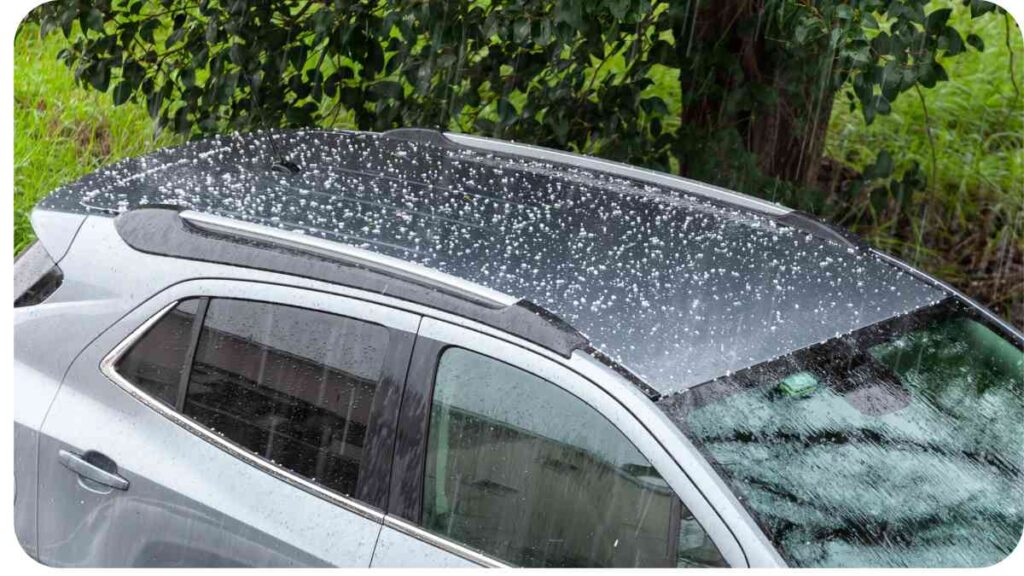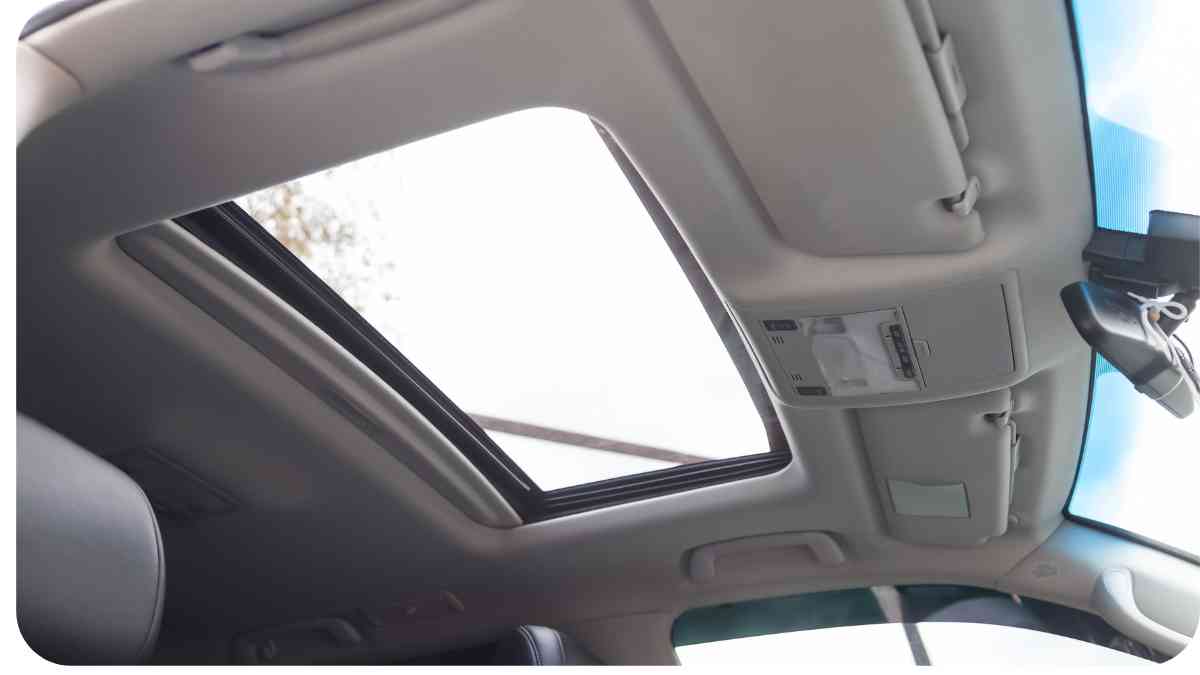When it comes to transporting larger items, roof racks are a convenient solution. However, some users may encounter annoying whistling noises while driving with a roof rack installed.
In this article, we will address the causes of these noises and provide practical tips to reduce or eliminate them. Whether you are a car enthusiast, road trip lover, or someone who frequently utilizes roof racks, this guide will help you enjoy a quieter and more comfortable driving experience.
| Key Takeaways |
| Addressing roof rack noise can enhance the overall driving experience. |
| Proper installation and compatibility with your vehicle are essential for reducing roof rack noise. |
| Aerodynamic designs and accessories like wind deflectors can help minimize noise. |
| Regular maintenance, including tightening loose components and cleaning the roof rack, is important. |
| DIY methods should be approached cautiously to avoid compromising safety or damaging the vehicle. |
2. Understanding Roof Rack Noises
Before we delve into the causes and solutions, it’s important to understand why roof racks can produce whistling or other unwanted noises. When airflow encounters the crossbars or accessories attached to the roof rack, it can create vibrations and disruptions, resulting in irritating sounds. These noises can vary in intensity and pitch, making a peaceful journey turn into a less enjoyable one.
When dealing with roof rack noises, it’s crucial to find effective solutions. Explore more about addressing roof rack sounds in this comprehensive guide. Learn More
3. Common Causes of Whistling Noises

3.1. Improper Installation
One of the primary causes of whistling noises from roof racks is improper installation. If the system is not correctly secured or components are misaligned, it can lead to gaps and spaces that alter the airflow pattern. Consequently, whistling sounds become more pronounced.
3.2. Inadequate Wind Deflectors
Wind deflectors, also known as fairing, play a crucial role in minimizing roof rack noises. These attachments redirect the airflow smoothly, reducing the chances of vibrations and noise generation. However, if your roof rack doesn’t come with a wind deflector or if the deflector is too small for your vehicle, it can contribute to whistling noises.
Hybrid cars have their advantages, but for those seeking solutions to roof rack issues, this article focuses on a different topic. For noise reduction tips, visit this resource.
3.3. Crossbar Design
The design of the crossbars themselves can also impact the incidence of whistling noises. Certain crossbars may have shapes or profiles that are more prone to causing disruptions in airflow, leading to increased noise levels. Additionally, the spacing between the crossbars can affect the noise produced.
3.4. Additional Accessories
Roof rack accessories, such as bike racks, cargo boxes, or roof baskets, can potentially contribute to whistling noises. Depending on their design and how they interact with the airflow, these accessories may create disturbances that result in unwanted sounds.
Table 3.4: Common Accessories and Their Impact on Roof Rack Noise
| Accessory | Impact on Roof Rack Noise |
| Bike Racks | May cause additional noise |
| Cargo Boxes | Can increase noise levels |
| Roof Baskets | May contribute to whistling noises |
4. Tips for Reducing Whistles and Noises

Now that we have explored the common causes of whistling noises from roof racks, let’s discuss effective tips to reduce or eliminate these disturbances and enjoy a quieter ride.
4.1. Proper Installation and Alignment
Ensure that your roof rack system is installed correctly and all components are aligned as per the manufacturer’s instructions. Take the time to double-check the installation and make any necessary adjustments. This will help minimize gaps and spaces that disrupt the airflow and cause whistling noises.
While hybrid cars are eco-friendly, let’s shift our attention to addressing those roof rack noises. For noise troubleshooting, explore this guide. Read Now
4.2. Install a Wind Deflector
If your roof rack does not come with a wind deflector, consider purchasing and installing one. Wind deflectors redirect the airflow smoothly, preventing disruptive vibrations and minimizing noise. Choose a wind deflector specifically designed for your vehicle’s make and model for optimal results.
4.3. Crossbar Design Considerations
When choosing a roof rack system, pay attention to the design of the crossbars. Opt for aerodynamic crossbars that have been specifically engineered to reduce wind noise. These crossbars create a streamlined shape that minimizes airflow disruptions and vibrations, leading to fewer whistling noises.
Table 4.3: Crossbar Design Considerations
| Crossbar Design | Impact on Noise Reduction |
| Aerodynamic Crossbars | Minimize wind noise and vibrations |
| Round Crossbars | May produce mild whistling |
| Square Crossbars | More prone to generating noise |
4.4. Remove Excess Roof Rack Accessories
If you notice excessive noise when driving with certain accessories mounted to your roof rack, consider removing them when not in use. While they serve a purpose, accessories like bike racks or cargo boxes can disrupt the airflow and contribute to whistling noises. By eliminating them when not needed, you can significantly reduce the chances of experiencing these noises.
Considering hybrid cars? Great, but if you’re here for roof rack noise solutions, this article won’t cover that. For noise reduction tips, refer to this guide.
Table 4.4: Impact of Removing Excess Roof Rack Accessories
| Removed Accessories | Impact on Noise Reduction |
| Bike Racks | Minimize additional noise from vibrations |
| Cargo Boxes | Reduce overall noise levels |
| Roof Baskets | Eliminate potential whistling noises |
4.5. Use Noise-Dampening Pads or Strips
To further reduce noise produced by the roof rack, you can add noise-dampening pads or strips to the contact points between the roof rack and your vehicle’s roof. These pads help absorb vibrations and prevent them from resonating through the roof, leading to a quieter ride.
4.6. Adjust Driving Speed and Conditions
While some roof racks may produce minimal noise at moderate speeds, increasing your driving speed can amplify the vibrations and noises. If you regularly experience whistling noises, try adjusting your driving speed or consider selecting alternative routes with varying wind conditions to minimize disturbances.
5. Choosing the Right Roof Rack System

Selecting the appropriate roof rack system for your vehicle is crucial in preventing or reducing whistling and other unwanted noises. Consider the following factors when choosing a roof rack:
Interested in car culture? That’s fascinating, but if you’re looking to address roof rack noises, this topic isn’t related. For roof rack noise solutions, check out this resource.
5.1. Compatibility with Your Vehicle
Make sure the roof rack system you choose is compatible with your specific vehicle make and model. Improperly fitting roof racks can create gaps and spaces that contribute to whistling noises.
5.2. Aerodynamic Design
Opt for roof rack systems with aerodynamic designs. These systems are engineered to minimize disturbances in airflow, reducing the chances of producing noise. Look for sleek and streamlined crossbars that will help maintain better aerodynamics during your travels.
Table 5.2: Roof Rack Systems with Aerodynamic Designs
| Brand | Model | Features |
| Thule | AeroBlade Edge | Low-profile design with integrated wind fairing |
| Yakima | JetStream | Aerodynamic shape for reduced wind noise |
| Rhino-Rack | Vortex | Lightweight design with vortex strips for noise reduction |
5.3. Customer Reviews and Recommendations
Before making a final decision, consider checking customer reviews and recommendations for the roof rack system you are interested in. Look for feedback on noise levels and overall performance to ensure that you select a system with positive reviews and high customer satisfaction.
6. Maintaining and Inspecting Your Roof Rack
To ensure your roof rack continues to perform optimally and remains quiet, periodic maintenance and inspections are necessary. Follow these guidelines:
6.1. Regularly Check for Loose Components
Inspect your roof rack system for loose or misaligned components. Over time, vibrations and road conditions can cause bolts and clips to loosen. Tighten any loose parts promptly to prevent excessive noise or potential damage.
6.2. Clean Your Roof Rack
Regularly clean the crossbars and accessories of your roof rack to remove any debris or dirt that may accumulate. Foreign particles can create disruptions in airflow and contribute to whistling noises. Use mild soap and water to clean the rack gently, avoiding abrasive materials that may scratch the surface.
6.3. Inspect Wind Deflectors
Check the condition of your wind deflector regularly. Ensure it is securely attached and free from cracks or damage that may affect its effectiveness. If any issues are detected, consider replacing the wind deflector promptly.
6.4. Periodic Noise Testing
Conduct periodic noise testing while driving to check for any emerging whistling or other noise issues. By identifying problems early on, you can take preventive measures and address them promptly, maintaining a quiet and peaceful driving experience.
7. Frequently Asked Questions
7.1. Will adding accessories to my roof rack always lead to whistling noises?
Not necessarily. While some accessories can contribute to whistling noises due to their design or interaction with airflow, it may not always be the case. Factors like installation, driving speed, and other environmental conditions can also play a role. However, if you do experience noise issues after adding accessories, consider removing them temporarily to identify the source of the noise.
7.2. Can I install a wind deflector on an existing roof rack?
In most cases, it is possible to add a wind deflector to an existing roof rack system. However, it’s crucial to ensure compatibility between the wind deflector and the roof rack. Check with the manufacturer or consult an expert to determine the appropriate wind deflector for your specific system.
7.3. Are round crossbars more prone to whistling noises compared to other designs?
Round crossbars have a higher likelihood of producing mild whistling noises compared to other designs. Their shape creates more disruptions in airflow, which can result in whistling sounds. However, the intensity of the noise can vary depending on factors such as driving speed, accessories installed, and overall roof rack setup. If minimizing whistling noises is a priority for you, consider opting for aerodynamic crossbars or other designs specifically engineered to reduce wind noise.
7.4. How can I determine if the noise is coming from the roof rack or elsewhere in my vehicle?
To identify whether the noise is originating from your roof rack or not, you can conduct a simple test. Remove all accessories and cargo from the roof rack, ensuring it is empty. Take a short drive, paying attention to any changes in noise levels. If the noise disappears or significantly reduces, it is likely related to the roof rack. However, if the noise persists, it could be originating from another source within your vehicle that requires further investigation.
7.5. Can I use DIY methods to reduce roof rack noise?
While there are DIY methods that claim to reduce roof rack noise, it is important to proceed with caution. Modifying your roof rack or adding materials that are not specifically designed for noise reduction may compromise safety or damage your vehicle. It is recommended to follow manufacturer guidelines, use certified accessories, and consult professionals for assistance in addressing roof rack noise issues.
8. Conclusion
Addressing whistling or noises from roof racks enhances the overall driving experience and ensures a quieter journey. By understanding the causes of these noises and implementing the tips provided in this article, you can significantly reduce or eliminate unwanted sounds. Remember to select a roof rack system that is compatible with your vehicle, utilizes aerodynamic designs, and consider customer reviews and recommendations.
Regular maintenance, periodic inspections, and proactive measures will help you enjoy a peaceful and comfortable ride with your roof rack. So, hit the road with confidence, knowing that you have taken the necessary steps to address roof rack noises and enhance your driving pleasure.
Further Reading
Here are some additional resources you can explore for more information on addressing roof rack noises:
- A1 Roof Racks: Why is My Roof Rack Making Noise?
- This blog post provides insights into the common causes of roof rack noises and offers tips on how to reduce or eliminate them.
- Suspension Traveler: How to Stop Roof Rack Noise
- Suspension Traveler offers an informative guide on identifying and addressing roof rack noise issues, with step-by-step instructions and helpful tips.
- Soundproof Central: How to Stop Roof Rack Noise
- Soundproof Central provides comprehensive guidance on reducing roof rack noise, covering different methods and techniques to achieve a quieter driving experience.
FAQs
Can roof rack noise be completely eliminated?
While it may not always be possible to completely eliminate roof rack noise, you can take various measures to significantly reduce it. Proper installation, choosing aerodynamic crossbars, adding wind deflectors, and removing excess accessories can go a long way in minimizing noise levels.
Will adding a wind deflector solve all roof rack noise issues?
Adding a wind deflector can help reduce roof rack noise by redirecting airflow, but it may not eliminate all noise. Factors such as driving speed, crossbar design, and other accessories can still contribute to noise generation.
Can roof rack noise cause damage to my vehicle?
Roof rack noise itself is typically harmless and does not directly cause damage to your vehicle. However, excessive noise can indicate loose components or improper installation, which may lead to further issues. Regular maintenance and inspections are important to prevent any potential damage.
Is it safe to modify my roof rack to reduce noise?
Modifying your roof rack without proper knowledge or expertise can compromise safety and potentially damage your vehicle. It is recommended to follow manufacturer guidelines, use certified accessories, and consult professionals for assistance in addressing roof rack noise issues.
Will noise-dampening pads or strips help reduce roof rack noise?
Noise-dampening pads or strips can be effective in reducing vibrations and noise by absorbing the impact between the roof rack and your vehicle. They provide an additional layer of cushioning, helping to minimize noise transmission.

Hello friends. My name is Hellen James and I’m here to help you make good decisions when it comes to buying, selling, and maintaining your vehicles.


